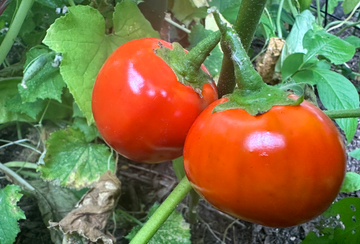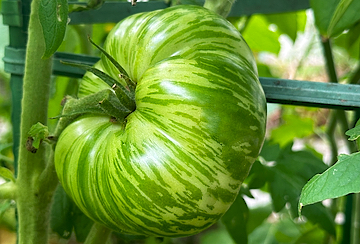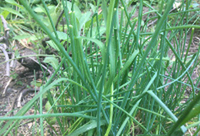
Odds and Ends

First, these are not tomatoes: they are orange Turkish eggplants, which I couldn't resist at the plant nursery out of sheer curiosity about their color, and as advertised, they are definitely orange.
While getting ready to write this article, I glanced at last year's time schedule, which reinforces what I've noticed since summer began: we are at least three weeks ahead of the normal seasonal patterns.
Before the Fourth of July, which is typically when only the earliest vegetable varieties produce a small crop, I had already harvested plenty of tomatoes, cucumbers, peppers, yellow squash, and as you can see, eggplants.
The purple ones are not too far behind, outperforming each other in blooming and fruiting, and disregarding the lengthy one hundred day seed to harvest timetable that these heat-loving vegetables are infamous for.
I don't know what to make of this, other than if it ain't broke, so I'll keep feeding and watering the veggies and let Mother Nature provide.

Interesting Tomato Varieties

Classic red tomato varieties like Supersweet100, Better Boy, Early Girl, Beefsteak, or Roma are always a safe bet, however, if you're feeling adventurous, here are some unusual non-red varieties to consider.
The Green Zebra in the picture remains green even when ripe, and its flesh is sweet and tart.
The Yellow Pear tomatoes are bright yellow and pear-shaped, as you would expect. Their flavor is mild and they look great in salads.
Sungold, a Japanese hybrid, turns golden yellow when ripe and maintains its firmness.
Black Beauty tomatoes, a goth's dream, stand out amidst lush, dark green leaves and produce fruit that is nearly black in color.
Cherokee Purple is purplish brown with chartreuse stripes.
Lastly, the Great White is the most fascinating variety: it ripens to a stunning ivory color and its flavor is reminiscent of pineapple and guava.
